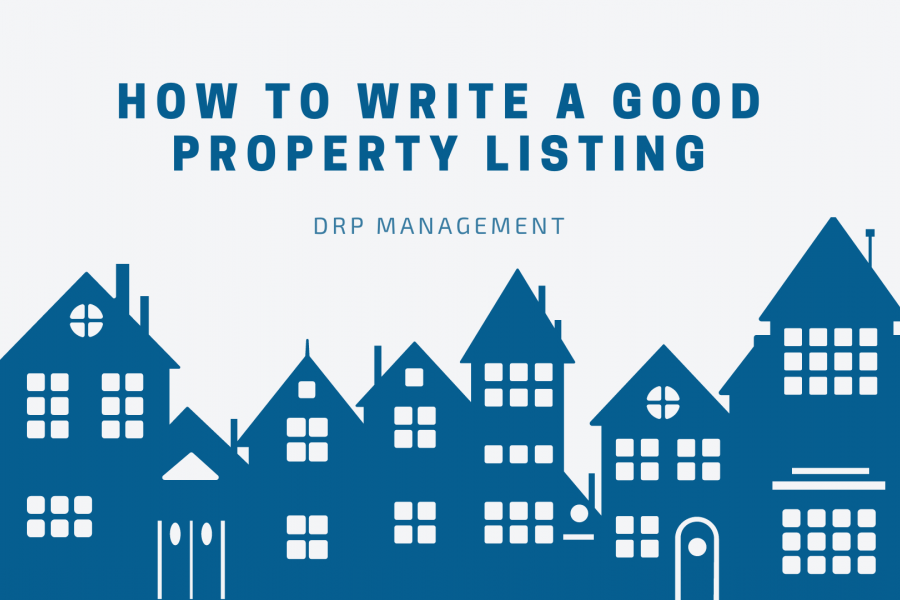
When it comes to renting out a property, a well-crafted property listing plays a crucial role in attracting potential tenants. An effective property listing is more than just a description of the physical features of the property, it should also highlight the unique features of the property, and compel readers to take action.
A well-written listing should create a strong first impression that entices potential renters to inquire further.
Use the following tips to write a compelling property listing for your rental home:
Start With a Captivating Headline
Capture the attention of potential tenants with a captivating headline. Highlight the most attractive aspect of the property to create a sense of urgency. For example, "Luxury Living in the Heart of the City: Your Dream Apartment Awaits" or "Limited Availability: Spacious Family Home with Modern Amenities."
Make sure that your headline hooks the audience right away, preventing them from scrolling away and looking for another property.
Provide Accurate and Detailed Descriptions
After grabbing the reader's attention with a compelling headline, it's time to provide detailed descriptions. Be thorough and accurate, ensuring that the information you provide is up-to-date and reflective of the property's current condition.

Include the essential details such as the property type, size, number of bedrooms and bathrooms, rental rates and any unique features like a garden, pool, or breathtaking view. Highlight recent renovations or upgrades to showcase the property's value.
Emphasize Unique Selling Points
What sets your rental property apart from other listings in the market? Is it the location, architectural design, energy efficiency, or proximity to amenities? Identify and emphasize the unique selling points and key features that make your rental property special. Showcase these features throughout the listing to capture the attention of prospective tenants.
Use Persuasive Language
Your property listing should attract potential tenants and paint a vivid picture in the reader's mind. Use persuasive language to pique the desire of your audience and create a sense of urgency. Instead of simply stating the facts, craft your descriptions in a way that appeals to the reader's imagination.
For example, instead of saying "big living room," try "spacious living room perfect for entertaining guests." Your goal is to ensure that the readers can picture themselves living on the property, so use visually descriptive adjectives to catch their attention.
Use High-Quality Photos
Accompany your property listing with high-quality photos that showcase the property's best features. Good photographs greatly enhance the appeal of your listing and help potential tenants visualize themselves living in the space.

Here are some tips for capturing appealing images:
Tidy Up the Space: Before taking any photographs, ensure that the property is clean, clutter-free, and well-staged. Remove personal items and excess furniture to create a more spacious and appealing look.
Use Good Lighting: Natural light is often the best option for interior shots. Open curtains and blinds to let in as much natural light as possible. Avoid using the camera flash, as it can create harsh shadows and distort colors. Experiment with different times of day to find the optimal lighting conditions.
Capture Wide Shots: Start by capturing wide-angle shots of each room to provide an overall view of the space. This helps potential buyers or tenants understand the layout of the property.
Use Proper Composition: Pay attention to the composition of your shots. Frame the photo in a way that is visually appealing and draws attention to the key elements. Avoid tilted angles and use horizontal or vertical lines to create a sense of balance.
Showcase Different Perspectives: Provide a variety of perspectives in your photographs to give a comprehensive understanding of the property. Include shots from different angles, such as close-ups of architectural details or interesting textures.
Pay Attention to Details: Capture close-up shots of any unique or noteworthy details in the property, such as intricate tiling, crown molding, or high-end fixtures. These details can help create a sense of luxury and quality.

Don't Forget Exterior Shots: Include exterior photographs to showcase the property's curb appeal. Capture the front facade, landscaping, outdoor living areas, and any additional features like a pool or a patio.
Edit for Enhancement: After capturing the photos, edit them to enhance their quality. Adjust the brightness, contrast, saturation, and others if necessary. However, be cautious not to over-edit, as it can give a misleading representation of the property.
Include Contact Information and a Clear Call to Action
Make it easy for potential tenants to contact you by including your contact information in the listing. Provide your phone number, email address, and any preferred method of communication.
End the listing with a clear call to action, encouraging interested individuals to schedule a viewing or inquire for more information.
Work With a Property Manager
Marketing your rental property can be overwhelming, and managing it on your own can be challenging. Consider hiring a property manager to market your property, streamline your operations, and enhance the rental experience for both you and your tenants.

A property manager such as DRP Management, can handle other tasks as well, such as tenant screening, rent collection, maintenance coordination, and legal compliance, freeing up your time and ensuring efficient management of your rental property.
Conclusion
Writing a good property listing is an essential skill that will help increase the exposure of your listing and attract high-quality renters. To make it easier for you, consider hiring a property manager to take care of your rental operations and ensure a hassle-free experience.
With the right property manager, you'll increase the chances of finding suitable tenants and optimizing your rental income. Get in touch with one of our experts at DRP Management and we’ll be happy to help you!
